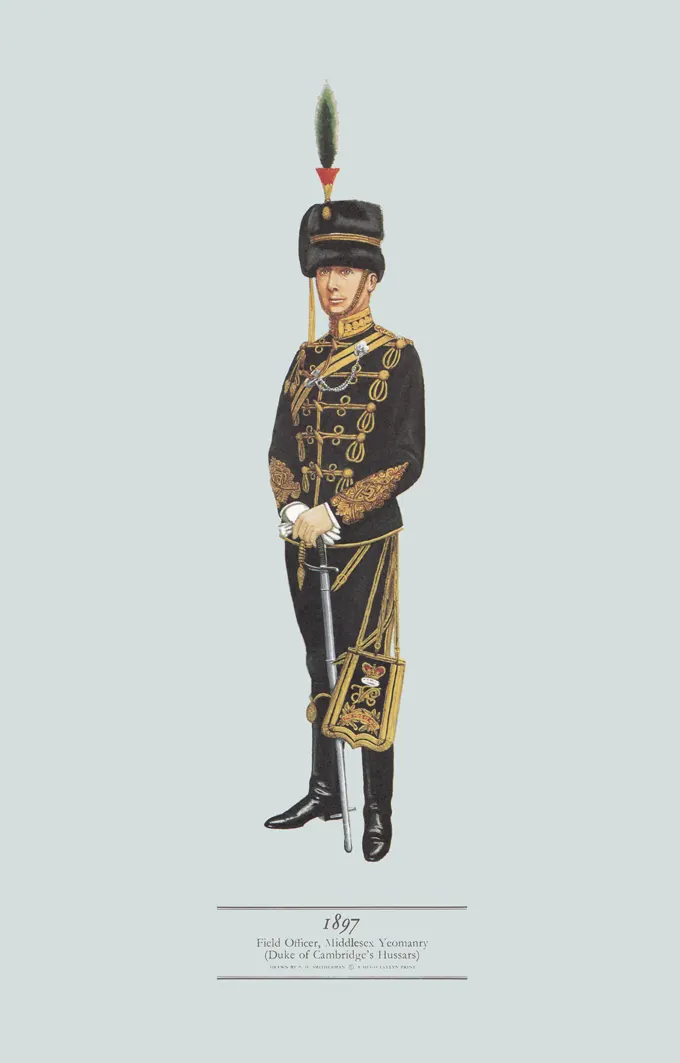Field Officer, Middlesex Yeomanry, 1897
£12.50
Uxbridge Squadron of Yeomanry Cavalry (1830) became Middlesex (Duke of Cambridge’s Hussars) Yeomanry Cavalry in 1884 (scroll down for a more detailed Description)
Published 1967 by © Hugh Evelyn Limited; drawn by Colonel Philip Henry Smitherman (1910-1982), Royal Corps of Signals
Size: c. 24.5 x 37.5cm [9 ½ ″ x 14 ½ ″] (may vary slightly from printers’ cut 50 years ago)
Printed on on medium cardstock weighing 144 g/sm2 faced in light greyish blue (RGB c. d5dede)
Print is STANDARD size – shipping is the same for 1 to 10 prints (based on largest print size in your order) – see Shipping & Returns
In stock
Description
In 1793 William Pitt proposed that English Counties form Volunteer Yeoman Cavalry forces to defend the country and subdue civil disorder within the country. A troop entitled the Uxbridge Volunteer Cavalry was raised by Sir Christopher Baynes in 1797. Disbanded in 1802 it was raised again as the Uxbridge Squadron of Yeomanry Cavalry with troops at Harefield and West Drayton, in 1830. The regiment escorted King William IV as he passed through Uxbridge to visit the Marquess of Westminster at Moor Park in 1834. It became the Middlesex Regiment of Yeomanry Cavalry (Uxbridge) in 1871 and the Middlesex (Duke of Cambridge’s Hussars) Yeomanry Cavalry in 1884. Being stationed near London it provided many royal escorts and was considered one of the most efficient yeomanry regiments. In 1920 it became part of the Royal Signals as the 47th (Middlesex Yeomanry) Signal Regiment. It is today a squadron of 71 (City of London) Yeomanry Signal Regiment of the Royal Corps of Signals. Here is Colonel Kenyon Mitford wearing a conventional hussar uniform except the tunic and pantaloons are green and the tunic has only five, instead six, rows of frogging. The officer is in levee dress and wears braided hessian boots and a gold stripe on his pantaloons.
Source: Photograph of Colonel Kenyon Mitford, and material supplied by Colonel L.F. Messel.
Additional information
| Weight | 0.012 kg |
|---|---|
| Dimensions | 24 × 37 cm |





